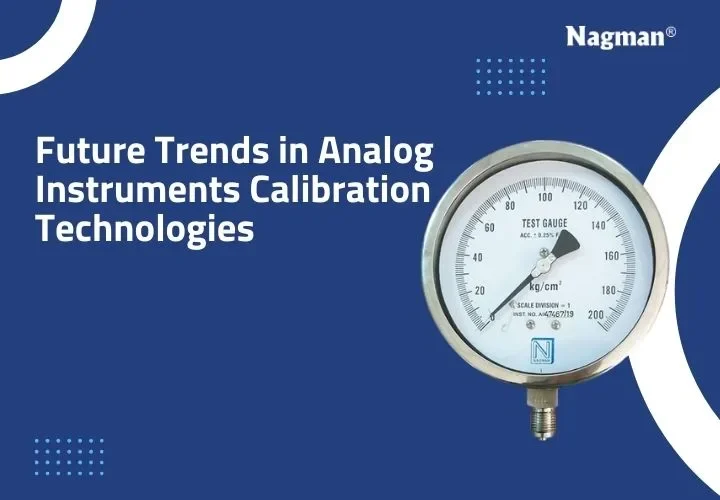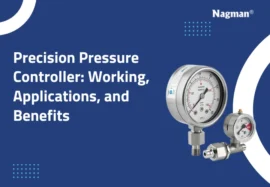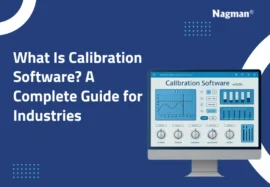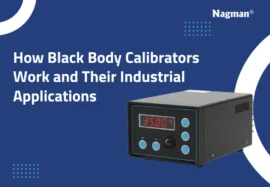Patented measurement accuracy ensures operational performance and safety protection in the manufacturing, aerospace, and energy industries. This is why analogue instruments are so important across various sectors. Even the digital wave could not reduce the importance of analogue systems, because they are reliable and robust.
This blog reviews the latest breakthroughs in analog instrument calibration, which have introduced new, innovative methods and precise measurement accuracy for simplified operations.
Future Trends in Analogue Instruments Calibration
Several essential operations have depended on analogue instruments since digital systems cannot withstand harsh environments and the electromagnetic interference present in those places. The techniques used to calibrate these instruments are also evolving accordingly. Some of the key future trends include:
- Manual calibration is converted into semi-automatic or fully automatic systems in this industrial age. Thus, the process is less prone to human mistakes and can be made more uniform.
- There is a market demand for hybrid calibrators that act as analogue and digital instrument support devices. These instruments smoothly connect different technology platforms in a combined system.
- The development of wireless calibration tools that connect to central systems using Bluetooth or Wi-Fi has made field calibration operations safer and quicker.
By modernising these calibration tools, we are developing processes that take less time and require fewer resources while maintaining uniform practice standards across all industries.
Integration of Digital Interfaces in Analogue Calibration
In today’s calibration industry, the most important updates are shared over digital interfaces integrated with traditional analogue systems. It sounds contradictory because analogue and digital are typically used as opposite and separate systems. However, using the old and the new technology together offers multiple advantages.
- A signal calibrator used by technicians generates an analogue output on digital displays for real-time data logging.
- Modern probing devices for pressure and temperature calibration tools can sync with mobile applications and calibration software to get test results immediately.
- The use of both analogue and digital parts helps enhance its tracking capabilities.
Innovations in Pressure Calibration for Analogue Instruments
Pressure calibrators are essential in three major industrial sectors: oil refineries, gas production, food processing, and pharmaceutical facilities. The widespread use of analogue pressure gauges in these sectors has led innovators to introduce more precise and portable solutions.
- The modular pressure calibration system allows users to work with different ranges and configurations from a single device, making it suitable for multi-gauge calibration.
- A digital reference pressure calibrator offers higher accuracy than conventional models and has built-in logging functions.
- Battery-operated field calibrators are used in remote areas since they are lightweight and simple for field calibrations.
Enhancements in Temperature Calibration Methods
The key properties needed in temperature calibrators are stability and the ease with which they can be controlled. Analogue temperature sensors that come with RTDS and thermocouples, for example, need accurate calibration before they can be used at their peak performance in precise fields like chemical processing and power generation industries.
The latest tools in this field come with:
- Dry block calibrators are developing rapidly due to technological improvements, which enhance their heat distribution and shorten their stabilisation periods.
- Multi-sensor calibrators help technicians simultaneously calibrate multiple analogue sensors, speeding up testing and increasing work efficiency in testing facilities.
- Modern advanced temperature calibration techniques enable users to scan QR codes to load the testing logs automatically and to store the calibration history.
Role of Signal Calibrators in Analogue Systems
The basic components of analogue calibration equipment are signal calibrators. These devices generate and detect electrical signals, including ma, V and frequency, to verify if analogue loop systems are working correctly. This device is indispensable in the field because:
- A single calibrator is necessary in the instrumentation setup as it can generate and test different analogue systems versatilely.
- It is used for loop testing of the complete control loop and is thus very important in process automation systems.
- Several signal calibration tools also come with user-friendly interfaces to simplify controls for advanced operations.
Impact of Calibration Management Software on Analogue Instrumentation
The introduction of calibration management software systems is a new technological breakthrough in calibration. Technicians are integrating this software with the analogue instrumentation framework for better work output.
- As digital documentation systems are enabled within the software, detailed recordings of analogue calibration results can be kept to minimise human errors.
- Calibration cycles can be automatically scheduled through the system for alert notifications.
- Accurate analysis of calibration data allows users to plan predictive maintenance and forecast potential equipment issues before quality audits start.
Conclusion
As technology progresses, traditional tools are being modified for better results. Although analogue instruments are still in style, their maintenance process has evolved rapidly. Analogue calibration is now being combined with intelligent next-gen calibration features to design intuitive software to increase the reliability of this technology for the future. The tools we use going forward are not analogue or digital – the answer is to use the trustworthiness of analogue and the strength of digital technology.






